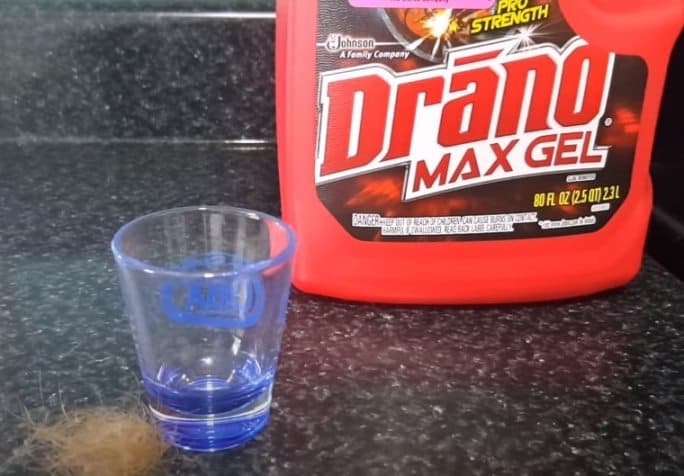If you’ve ever encountered a clogged drain, chances are you’ve reached for a bottle of Drano. It’s a popular solution for clearing away obstructions in pipes, but some people worry that the chemical solution could do more harm than good. In this article, we’ll explore whether Drano really damages pipes or not, and what you can do to prevent clogs in the first place.
What is Drano?
Drano is a commercial drain cleaner that’s designed to dissolve hair, soap scum, and other organic matter that can clog pipes. It’s been around for over 80 years and is trusted by millions of people around the world.
It comes in a liquid or gel form and contains a combination of chemicals, including sodium hydroxide, sodium nitrate, and aluminum. When you pour Drano down a clogged drain, it reacts with the water to create heat and gas, which helps break down the obstruction.
How does Drano work?
Drano works by creating a chemical reaction that dissolves the material causing the blockage. The active ingredient in Drano is sodium hydroxide, which is highly alkaline and capable of breaking down organic matter. When sodium hydroxide comes into contact with water, it creates heat and gas, which helps to loosen and dissolve the clog.
Other ingredients in Drano, such as sodium nitrate and aluminum, help to enhance the chemical reaction and improve the effectiveness of the product.
Read: Best drainage solution ideas that you can use in your home
Does Drano damage pipes?
This is a common concern among homeowners who use Drano to clear clogged drains. The short answer is no, Drano does not damage pipes in most cases.
However, if used improperly or too frequently, Drano can cause damage to your pipes and plumbing fixtures. The chemicals in Drano are highly caustic and can eat away at certain materials over time.
For example, if you have older metal pipes, the sodium hydroxide in Drano can corrode the pipes and cause leaks. Additionally, if you have PVC pipes, the high temperatures created by the chemical reaction can soften the plastic and cause it to warp or melt.
How to use Drano safely
To avoid damaging your pipes or plumbing fixtures, it’s important to use Drano safely and responsibly. Here are some tips to keep in mind:
- Only use Drano as a last resort. Try other methods, such as plunging or using a drain snake, before resorting to chemical drain cleaners.
- Read the instructions carefully before using Drano. Make sure you understand the dosage and how to safely pour the product down the drain.
- Wear gloves and eye protection when using Drano to protect your skin and eyes from contact with the chemicals.
- Never mix Drano with other chemicals or cleaning products, as this can create a dangerous reaction.
- Avoid using Drano in toilets or garbage disposals, as it can damage the plumbing and create more serious problems.
Alternatives to Drano
If you’re looking for a safer and more eco-friendly way to unclog your drains, there are plenty of alternatives to Drano. Here are a few:
- Baking soda and vinegar: Mix equal parts baking soda and vinegar and pour the mixture down the drain. Let it sit for 30 minutes, then flush with hot water.
- Plunger: Use a plunger to create suction and force the clog through the drain.
- Drain snake: Use a drain snake or auger to physically remove the blockage from the pipe.
- Enzyme-based drain cleaners: Enzyme-based drain cleaners use natural enzymes to break down organic matter and are safer for your pipes and the environment.
How to prevent clogs in the first place
Prevention is always better than cure when it comes to clogged drains. Here are some tips to help prevent clogs from forming in the first place:
- Use a drain strainer to catch hair and other debris before it goes down the drain.
- Avoid pouring grease or oil down the drain, as it can solidify and cause blockages.
- Use a plunger regularly to keep your drains flowing smoothly.
- Have your pipes professionally cleaned every few years to prevent buildup and clogs.
FAQs
Is Drano safe for shower drains?
Drano can be safe for shower drains if used properly and according to the instructions on the label. However, it is important to note that Drano and other similar drain cleaners contain harsh chemicals that can be harmful if not handled and disposed of properly.
Is Drano safe for PVC pipes?
Drano is generally safe for PVC pipes, but if used improperly or too frequently, it can soften the plastic and cause it to warp or melt.
Can Drano damage septic systems?
Drano can harm septic systems by killing off the beneficial bacteria that break down waste. It’s best to avoid using Drano in homes with septic systems.
Can Drano be used in toilets?
Drano is not recommended for use in toilets, as it can damage the plumbing and create more serious problems.
How long should you wait before flushing after using Drano?
It’s recommended to wait at least 30 minutes after using Drano before flushing the drain with hot water.
Conclusion
Drano is an effective solution for clearing clogged drains, but it can cause damage to your pipes if used improperly or too frequently. Always follow the instructions carefully and take precautions to protect yourself and your plumbing fixtures.
There are plenty of alternatives to Drano that are safer for your pipes and the environment, and prevention is always the best approach to dealing with clogged drains.
